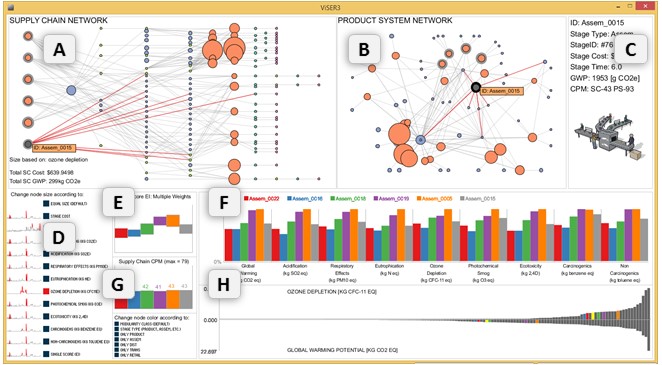In this paper, we present a novel visualization framework for product and supply chain metadata in the context of redesign-related decision scenarios. Our framework is based on the idea of overlaying product-related metadata onto the interactive graph representations of a supply chain and its associated product architecture. By coupling environmental data with graph-based visualizations of product architecture, our framework provides a novel decision platform for expert designers. Here, the user can balance the advantages of a redesign opportunity and manage the associated risk on the product and supply chain. For demonstration, we present ViSER, an interactive visualization tool that provides an interface consisting of different mutually coordinated views providing multiple perspectives on a particular supply chain presentation. To explore the utility of ViSER, we conduct a domain expert exploration using a case study of peripheral computer equipment. Results indicate that ViSER enables new affordances within the decision making process for supply chain redesign.
Keywords: sustainable design, visual analytics, LCA interpretation, supply chain design
Screen capture of the ViSER tool. Each feature of the ViSER platform is described as follows: (A) a directed graph that represents the supply chain network as the edges connected to the selected nodes are shown in red, (B) a representation of the product system graph oriented by a combination of force directed physics and user manipulation, (C) a panel with detailed information about the most recently selected item, (D) sparklines for each criterion with outliers shown in red, (E) a boxplot that provides a range of single score impacts per selection, (F) a comparison chart of impact categories for selected nodes, (G) change propagation results for selected nodes, and (H) the profile of selected node attributes, ecotoxicity. A demonstration video can be seen here: http://goo.gl/mTqbby.
Accepted for publication in Journal of Mechanical Design


